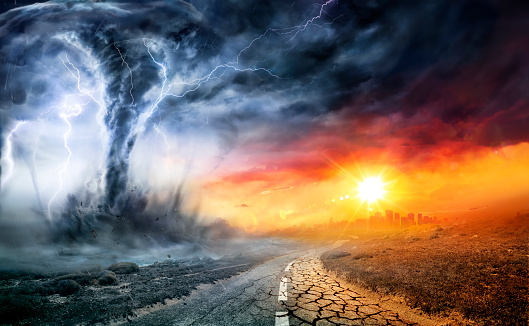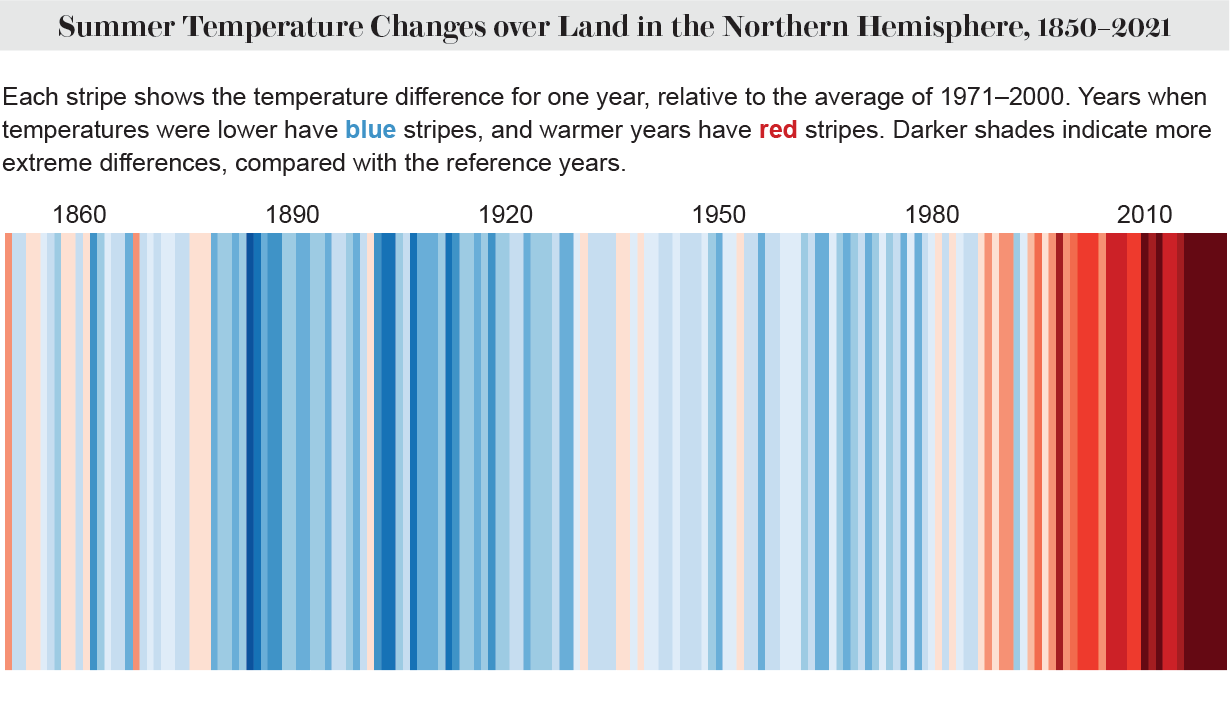CLIMATE DISASTERS: THE NEW NORMAL FOR IT AND BUSINESS CONTINUITY Part 1: Climate Chaos
Just in case someone didn’t get the memo, the Planet Earth is in big trouble.
“The dangers of climate change are no longer hypothetical”, the distinguished, Nobel Prize winning scholar Paul Krugman wrote in the NY Times. “The extreme weather events we’ve recently seen around the globe – severe droughts and forest fires in the American West, intensified hurricanes, catastrophic flooding in Europe, heat waves pushing temperatures in the Middle East above 120 degrees (F) – are exactly the kinds of things scientists warned us to expect as the planet warms. “
As fate would have it, the acceleration of global warming and climate disasters came in 2020-2021, a period in which the deadly Covid-19 pandemic killed more than 4.5 million people worldwide, disrupting economic and social life in most countries. According to the WHO, Covid-19 is the most dangerous pandemic of the century (since the Spanish flu of 1918) and the biggest challenge that WHO has ever had to face. For most IT and Business Continuity teams, Covid-19 was also a huge challenge.
Unfortunately, as Bill Gates presciently wrote: “As awful as this pandemic is, climate change could be worse.” Covid may turn out to be a “rehearsal” for decades of climate chaos in which Disasters will be “the New Normal” for society and enterprises.
In Part 1 of this blog, we will overview the acceleration of human induced climate change and the destructive, extreme weather disasters it has unleashed on our Planet.
In an upcoming Part 2, we will focus on what this new environment means for IT and Business Continuity Managers and how they will have to adapt in the coming years to protect, as much as possible, their enterprises and all the stakeholders.
IS THE PLANET EARTH REALLY GETTING HOTTER?
The short answer is YES.
We can visualize this clearly (in the graphic below) for the last 150 years, from about 100 years after the beginning of the industrial age in 1760 which ushered in the massive use of coal and other fossil fuels. Widespread burning of fossil fuels released large quantities of “green house gases” (GHG) into the atmosphere and started the process of global warming.
According to a remarkable article by “sustainability” specialist Adriana Thompson in the Scientific American: “In a world without human-caused climate change, we would expect to see records set fairly randomly, following the whims of our planet’s natural variations in climate. But global warming has effectively loaded the dice, with record heat outpacing record cold. This imbalance is starkly evident in the famous “warming stripes” graphics created by climate scientist Ed Hawkins of the Univ. of Reading in England. These graphics render each year’s average temperature as a shade of red or blue, depending on how much above or below the long-term average it is.”
Scanning the stripes from 1860 to 2021 is an edifying experience for anyone still in climate change denial. Somewhat unnervingly, the article is entitled: “This Hot Summer Is One of the Coolest of the Rest of Our Lives.”
Two major conclusions are clear:
- Heat waves broke temperature records around the world this past summer, but "it will still be one of the coolest summers of the next few decades”, which is not much consolation.
- Making matters even worse, Thompson adds: “But even if we bring greenhouse gas emissions under control, we will still have to live in a hotter climate than we did in the past.” In any case, the greenhouse gases will still be in the atmosphere and climate chaos will continue unabated. Conceivably these GHG gases could be removed by technologies under development, but their efficiency will have to be improved by multiple orders of magnitude to make a real difference.
To double check this admittedly unpleasant analysis and to get some insight into the shorter term, we also consulted the excellent climate monitoring work of Dr. James Edward Hansen and his team: the Climate Science, Awareness and Solutions Program at Columbia University.
According to Dr Hansen together with Makiko Sato and Reto Ruedy, “El Nino/La Nina are the largest cause of global temperature variability on the time scale of a few years and they are notoriously difficult to predict more than a few months ahead. Nevertheless, we have some inside information, which encourages us to hazard a prediction for the next three annual mean global temperatures ”
These predictions are illustrated on the graphic:
- 2022 will finish in about a dead heat with 2017 for 4th warmest year in the record
- 2023 will be even hotter than 2022
- 2024 will be off the charts as the warmest year on record.
|
Now let’s look in more detail at the Climate Chaos that this has brought to the Earth and that we may have to live with for decades.
UN CLIMATE REPORT: "CODE RED" FOR HUMANITY
In early August of 2021, the UN’s Intergovernmental Panel on Climate Change (IPCC) - a group of over 100 prestigious scientists whose findings are endorsed by the world's governments - released its first major review of the climate crisis since 2013. The news is not good, to say the least.
The report "is a code red for humanity", says UN Secretary General Guterres.
The IPPC establishes that human activity is changing the climate in unprecedented and sometimes irreversible ways, with extreme heat waves, droughts and flooding. The world is now on average about 1.2°C warmer than at the end of the 19th Century.
An increase of 1.5°C – generally seen as the ‘tipping point’ for climate change- could occur in just over a decade, much earlier than expected.
In developing their projections, the scientists developed various warming scenarios, but whatever the scenario, the result is bad, as seen on the graphic.
The key points of the IPPC report are:
- The past five years have been the hottest on record since 1850
- Since 1970, global surface temperatures rose faster than in any other 50-year period over the past 2,000 years
- The recent rate of sea level rise has nearly tripled compared with 1901-1971
- Human influence is "very likely" (90%) the main driver of the global retreat of glaciers since the 1990s and the progressive melting of Arctic sea-ice
- Hot extremes including heat waves have become more frequent and more intense since the 1950s; cold events have become less frequent and less severe
- In all scenarios, +1.5°C will be reached by 2040, perhaps earlier. According to a Climate Action Tracker study: "The world is nowhere near its goals on limiting global temperature rise and is heading for 2.4°C of warming." Current policies could lead to 2.6°C to 2.7°C warming by 2100.
According to the UN Environment program, “the world is far from securing a global temperature rise to below 2°C as promised in the Paris Agreement…. To limit global temperature rise to below 2°C aiming for 1.5°C, as promised in the Paris Agreement, countries must cut 30 gigatonnes of Green House Gas (GHG) emissions annually by 2030. GHG emissions are choking our world, mitigation opportunities exist but these emissions continue to rise.”
In any case, over 50% of GHG emissions come from just four countries: China (30%), US (14%), India (7.4%) and Russia (4.8%). Getting agreement on an actionable and equitable plan in the next few years .... well, good luck with that!
So, what happens next? As one might expect, nothing good:
· Temperatures will reach 1.5°C above 1850-1900 levels by 2040 The Arctic is likely to be practically ice-free in September at least once before 2050
· There will be an increasing occurrence of some extreme weather events "unprecedented in the historical record" even at warming of
· Extreme sea level events that occurred once a century are projected to occur annually
· There will be likely increases in fire weather in many regions.
An example: in March 2022 alarming heat waves hit Arctic and Antarctica. One result was a goodly number of confused penguins, but late in the month a block of ice the size of New York City fell off Antarctica and into the Southern Sea.
According to a government study, US sea level will rise as much in the next 30 years as it did in the past 100 -- increasing the frequency of high-tide flooding, pushing storm surge to the extreme and inundating vulnerable coastal infrastructure with saltwater.
Of course things could get much worse after that: If all glaciers and ice caps on Earth were to melt, global sea level would rise 70 meters, flooding every coastal city on the planet.
Prof Carolina Vera, vice-chair of the working group that produced the document, said: "The report clearly shows that we are already living the consequences of climate change everywhere. But we will experience further and concurrent changes that increase with every additional beat of warming."
Now let's take a look and see how these pessimistic predictions (to say the least) played out worldwide in 2021 and 2022.
CLIMATE CHAOS IN 2021
Global warming and GHG emissions resumed their upward march, after a short lived drop in 2020 due to the pandemic.
2021 was the
sixth-hottest year on record. The average global temperature in 2021 was about 1.11°C above the
pre-industrial (1850-1900) levels.
As for GHG, they rose by 6% in 2021 to
36.3 billion tonnes, their highest ever level, as the world economy rebounded
strongly from the Covid-19 crisis and relied heavily on coal to power that
growth, according to new IEA
analysis released in March 2022. Nonetheless, the
more advanced economies did show modest declines, while coal dependent India
and China rebounded sharply. In fact, coal
is the fossil fuel that is responsible for the largest share (40%) of GHG emissions.
Chaotic weather conditions increased in 2021, including
Heat waves and droughts in Europe and the Western US
Wildfires around the world
Deadly flooding in Europe
Tornadoes on the rampage in the United States
Atlantic Hurricanes like the monster storm Ida
Satellite image of hurricane IDA © Maxppp - Noaa
CLIMATE CHANGE ACCELERATES IN 2022
Some touchingly optimistic souls may have thought that things would surely come back closer to “normal” after the climate chaos of 2021. Unfortunately 2022 is shaping up to be even worse.
According to the World Meteorological Organization, after a post pandemic rebound in 2021, concentrations of GHG continued to increase in first half 2022. More precisely, latest research data from the Global Carbon Project found that global carbon emissions were 1.2% higher again in the first five months of 2022 compared with 2019. In coal hungry China, GHG emissions rose 6%.
For the NCEI's Global Annual Temperature Rankings Outlook, there is a greater than 99% chance 2022 will rank among the
10-warmest years on record but an 11% chance the year will rank among
the top five. In fact, 2022 was the world’s sixth-hottest July on record, according to NOAA.
Climate change accelerated in 2022, including:
- Melting of polar and glacier ice
- Extreme drought in North America
- Violent Atlantic Hurricane season
- A summer from hell in Europe
- Climate catastrophe in South Asia
For a brief review of these extreme weather events, consult:
Our clear choice for 2922 disaster of the year is the South Asian climate catastrophe, especially the “monsoon season on steroids,” (in the words of U.N. chief Antonio Guterres) that left one-third of Pakistan completely submerged by historic flooding.
In our opinion, given
the incalculable human suffering and the massive physical damages, the 2022
Pakistan flooding is the single worst climate change disaster the world has ever
seen.
Poor Pakistan. They are responsible at most for about 1% of GHG emissions, and yet Pakistan is the country that gets clobbered the worst. At least, so far….
© UNICEF/Asad Zaidi A flooded village in Matiari, in the Sindh province of Pakistan.
WHAT DO WE DO NOW?
SYNTHESIS
After this admittedly lengthy analysis of Climate Chaos, let’s sum it up.
· Human induced Global Warming in the postindustrial age - due to widespread use of fossil fuels and the release of Green House Gases (GHG) - has reached a critical point in 2021-2022 and is accelerating. Let’s be clear: humanity is facing an existential crisis.
· The extreme weather events we’ve seen around the globe – severe droughts and forest fires, intensified hurricanes, catastrophic flooding in Europe, blistering heat waves, melting of polar ice - are exactly the kinds of things scientists warned us to expect as the planet warms. Expect them to become more frequent and more violent.
· To avoid the worst impacts of Global Warming, GHG emissions need to be reduced by almost half by 2030 and reach Net Zero by 2050.
· Still, the world is far from the type of emissions reduction needed to keep the postindustrial temperature rise below 2°C (aiming for 1.5°C) as promised in the Paris Agreement. After the pandemic, GHG gases went back up in 2021 and 2022, as did global temperatures.
· Some progress has been made on clean energy by Europe and the US, which are both investing in clean energy including both renewable and nuclear power. Surprisingly China led the way on clean energy in 2021, installing “more renewable capacity than was rolled out in the US, Europe, Latin America, Middle East, Southeast Asia and Africa combined."
· Nonetheless, in our opinion, it may well take a drastic global temperature rise of as much as 2.4°C or more - which is where the world is heading at the moment - accompanied by increasingly extreme weather disasters to force effective action.
· Even if we get to Net Zero (a very big IF), the gases will still be in the atmosphere and climate chaos will continue unabated. These GHG gases could be removed by technologies under development, but their efficiency must be improved by multiple orders of magnitude.
|
|
SO, WHAT NEXT?
Solving the underlying problem of drastically reducing GHG emissions is a vast subject going far beyond the scope of this article.
In any case, it’s a reasonable bet that the world is not going to do enough - fast enough - to hold down, let alone reverse, global warming for at least multiple decades. When all hell starts to break loose, then maybe we'll get some effective worldwide action.
So, it’s time to talk about adaptation.
On a
practical level, Deanne Criswell, head of the Federal Emergency Management
Agency (FEMA), gave the most realistic answer we have seen yet. She told the US
media after the early December 2021 tornado outbreak: “This is going to be our new normal."
"The
effects that we're seeing from climate change are the crisis of our
generation," the FEMA chief added. "We're seeing more intense storms,
severe weather, whether it's hurricanes, tornadoes, wildfires…The focus I'm
going to have is: how do we start to
reduce the impacts of these events?"
Risk
mitigation and disaster readiness are essential to adaptation, both at
Criswell’s level (national) and at the level of the enterprise.
In Part 2 of this article, we will radically
narrow our focus to the enterprise level to address questions such as:
- What does this new environment mean for IT and Business Continuity Managers?
- How will they adapt to the New Normal of disasters to
protect their enterprises and stakeholders?
Author: Donald Callahan
On Twitter: @dcallahan2








Comments
Post a Comment